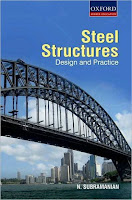 J. Michael Duncan, Stephen G. Wright, T. L. Brandon ...
J. Michael Duncan, Stephen G. Wright, T. L. Brandon ... 336 pages -
Publisher: Wiley; 2nd edition (September, 2014) ...
Language: English -
ISBN-10: 1118651650 -
ISBN-13: 978-1118651650 ...
The definitive guide to the critical issue of slope stability and safety
Soil Strength and Slope Stability, Second Edition presents the latest thinking and techniques in the assessment of natural and man-made slopes, and the factors that cause them to survive or crumble. Using clear, concise language and practical examples, the book explains the practical aspects of geotechnical engineering as applied to slopes and embankments. The new second edition includes a thorough discussion on the use of analysis software, providing the background to understand what the software is doing, along with several methods of manual analysis that allow readers to verify software results. The book also includes a new case study about Hurricane Katrina failures at 17th Street and London Avenue Canal, plus additional case studies that frame the principles and techniques described. Slope stability is a critical element of geotechnical engineering, involved in virtually every civil engineering project, especially highway development. Soil Strength and Slope Stability fills the gap in industry literature by providing practical information on the subject without including extraneous theory that may distract from the application. This balanced approach provides clear guidance for professionals in the field, while remaining comprehensive enough for use as a graduate-level text. Topics include: * Mechanics of soil and limit equilibrium procedures * Analyzing slope stability, rapid drawdown, and partial consolidation * Safety, reliability, and stability analyses * Reinforced slopes, stabilization, and repair. The book also describes examples and causes of slope failure and stability conditions for analysis, and includes an appendix of slope stability charts. Given how vital slope stability is to public safety, a comprehensive resource for analysis and practical action is a valuable tool. Soil Strength and Slope Stability is the definitive guide to the subject, proving useful both in the classroom and in the field.
 N. Subramanian ... 864 pages - Publisher: Oxford Univ. Press; (March, 2011) ... Language: English - ISBN-10: 0198068816 - ISBN-13: 978-0198068815
N. Subramanian ... 864 pages - Publisher: Oxford Univ. Press; (March, 2011) ... Language: English - ISBN-10: 0198068816 - ISBN-13: 978-0198068815



